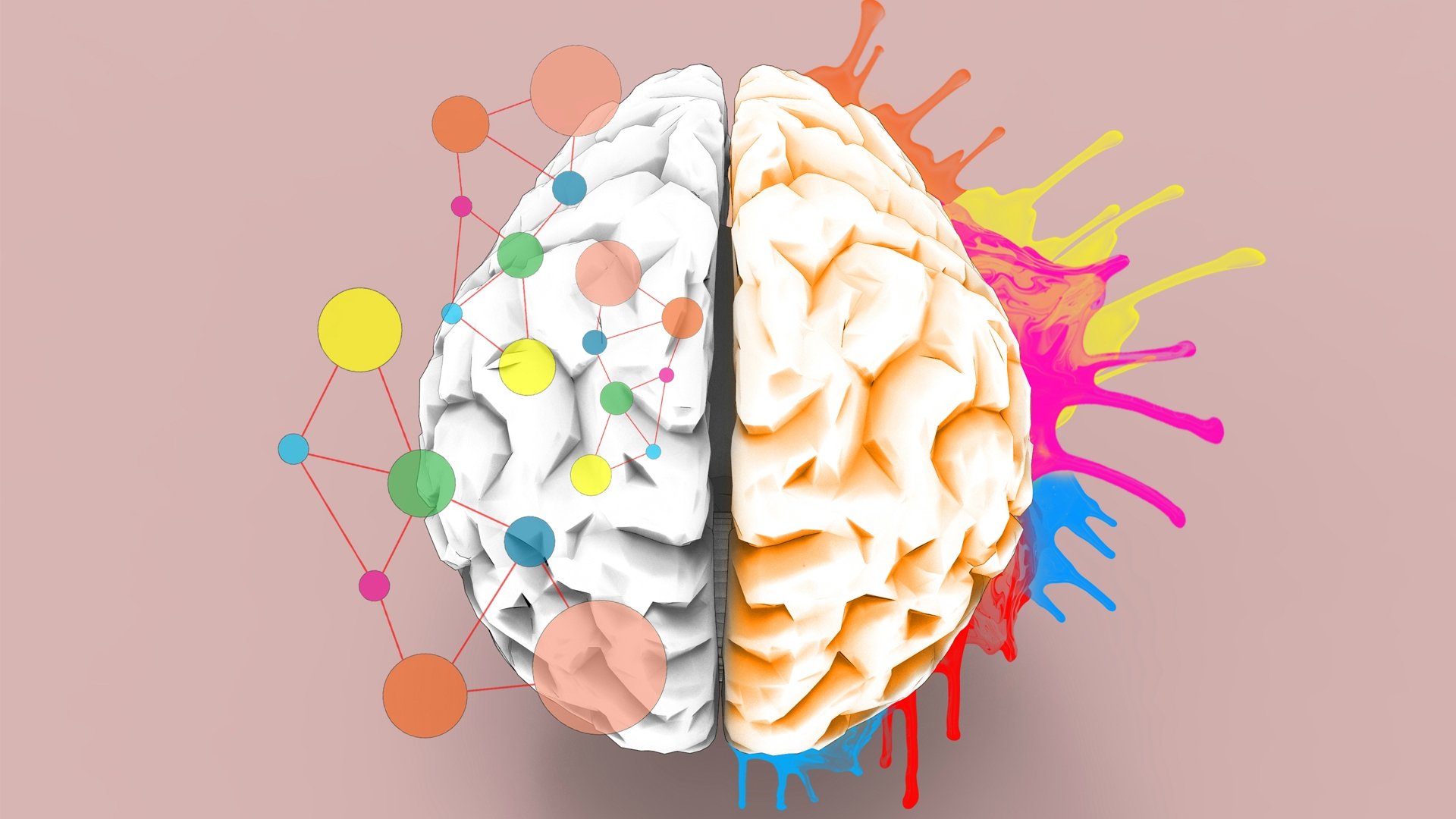Great designs are developed from a simple but rich idea, so they draw our attention to their design and then show us the problem they were made to solve. People are attracted to high-quality designs that lead to a specific goal because they search for the best product to facilitate their lives.
That's why companies invest millions in developing new products that enrich our lives and help us look good. Your company may be at a different level than Amazon or Apple, but you also seek to design a product that will help many people. Although you may not be an executive in a company that can spend millions of dollars on product development, you can still follow the same method and process to develop a successful product.
Design Thinking
Design Thinking, which is associated with creative problem-solving, is about the human side of the process. It aims to develop a way of thinking that allows you to solve problems creatively. It helps teams achieve a balance between a product that is logical, technically appropriate, and commercially feasible. Design Thinking seeks to “encourage companies to focus on the target audience,” which leads to better products and services. Design thinking is the creative process that results in the creative design of a product or service, which greatly benefits the user.
You may not have realized that you have come across the formal process of design thinking, but they have taught us about it since our early school days. In elementary school, we learn to discover the problem and work to solve it. In middle school, the focus is on moving the process to the next stage, where you must discover the answer and be encouraged to find several applications for the solution in different contexts. In high school, we are pushed to go beyond the limits of our previous knowledge and are encouraged to solve problems that may not yet exist. The goal is to visualize the problem and develop a problem-solving process. That is, we have been applying the stages of design thinking since we were young.

Basic Design Thinking Principles
A quick online search will give you hundreds of results about different theories of thinking and multiple models of the design thinking process, but reviewing all of those results and then choosing the best one for you is very stressful, so we will try to help you save time and effort by introducing you to the components of design thinking.
Let's start with a quick overview of the basic principles of design thinking:
1. Empathy
The dictionary defines empathy as having the capacity to recognize and comprehend the emotions of others. When we apply sympathy to design thinking, we will discover that everything begins with communication, leading to a deep human focus to reach perspectives that can reveal new and unexplored ways of looking at the problem, allowing us to see the issue from a new perspective and find solutions that we have missed and must start with empathy because these changes in viewpoints require us to communicate at a deeper level with clients to understand their needs.
2. Reframe the problem
We can think about things differently when we adopt new perspectives. We discover information and concepts when we approach the issue from different angles. Learning to reframe the problem is one of the design thinking tenets, and doing so accomplishes two goals:
- Seeing the problem from a different point of view.
- It led you to think about the problem differently.
We look at the world around us through our experiences, and when we change our perspective, the things we see change, which is the essence of reframing. If you can define the issue differently, you shed light on new challenges and, at the same time, force yourself to think about the problem differently.
3. Use different thinking styles to explore multiple possibilities
The best way to solve a complex problem is to invite others to participate. Design thinking is not supposed to be an individual act. Creativity works best when others cooperate in it. Design thinking is perfect for collaborative communities to help them overcome complex challenges. Solving a simple problem may require one person, but solving complex ones needs the contribution of many people.
The beauty of a cooperative society for solving complex problems is that it brings together diverse people who think differently, have various perspectives, and belong to different backgrounds. If you invest this correctly, the power of this creative gathering and the results it can achieve will be stunning, so challenging problems become easy. Complex issues are analyzed into simple parts that are easy to deal with.
Creativity does not happen when all team members think the same way. Accepting different opinions and providing space for thinking allows creative ideas and new perspectives to emerge. Change and transformation must occur when community members cooperate to overcome complex problems through the design thinking process.

Basic Design Thinking Concepts
There are three concepts that the design thinking mindset relies on:
1. Communication
Empathy is one of the principles of design thinking. It is based on honest communication that comes from the heart. Conceptual ideas do not form bonds between people. They logically analyze the potential possibilities away from feelings, but for something to make a difference, it must be felt by all concerned parties. That is, change requires sensation. Another possibility that communication gives you is the understanding that design thinking invests the creative process in finding a solution or developing a product for a human being, but how can you know this person, their desires, and needs unless you communicate with them? So, the more empathetic you are, the deeper your communication will be and give you more insight. Design thinking is based on empathy because it strengthens connections between the person who designs it and those for whom it is intended.
2. Brainstorming
Thinking is the essence of creative activities in the design thinking process, but reaching new ideas is not the only goal of it. It also seeks to unleash creativity and imagination by creating a competition between thoughts on winning the best idea regardless of who puts it forward. This simple commitment to the process gives teams freedom. Instead of being afraid to share their ideas because they may be insignificant, you encourage them in this way to reach new ideas that can succeed, knowing that they may be applied. The challenge many companies face is that leaders believe their ideas are the best. Still, true success occurs when you form a team of skilled professionals, enable them to make decisions, express their opinions, and ensure that the best idea is selected.
3. Testing
Refrain from guessing whether your assumptions about the idea are correct, whether you have reached the final product form, or how people will react. Instead, test it to come up with accurate answers to those questions, as many need to pay more attention to this step of the process. Trying an idea for a short period is not a test. Instead, you must commit to the testing period, and the design thinking process allows us to apply, modify, and improve an idea. When we set a firm and precise time frame and leave time, we can understand why the idea succeeds or fails.
We must repeatedly test ideas as part of design thinking. Innovation is aided by testing, and no globally successful product has ever undergone extensive testing over a long period. It's interesting to consider how many of our greatest inventions happened accidentally while we were testing out other goods. The Post-it notes, for instance, came about as a result of testing a different product, so the most crucial step in this process is experiencing your ideas until you come up with a winning one and then refining them until you have a winning product.

Stages of Design Thinking
Let's look at the five stages of design thinking:
1. Empathy
The phase goal is to gain a deep understanding of the clients for whom you are designing the product and what drives their emotions, so you should ask: What is bothering them? How do they spend their day? What are the things that cause them stress? It is the process of discovering their real problems and desires in life, and companies must meet people at this stage, so they design considering technical possibilities and focus on the client's points of view, opinions, and ideas without bias.
Empathy is the first step because of the need to understand these values and deep perspectives. When solving problems a person suffers from, the designer must have strong empathy, or they will have design challenges. Empathy is an essential stage in the process, and we must understand the buyer's thinking process and point of view if we want to design for them. It is only possible to understand and feel the client's problems if you have empathy. There is an evident methodology for the discovery process from this stage, the steps of which are as follows:
Immersion
Immerse yourself fully in an environment that simulates the client's environment so that you feel, see, and live - to a small extent - what they live daily.
Market analysis
Several companies offer your client’s market analysis service, where they conduct online research and visit local establishments to identify the behavior patterns of the people you target and then write a description that provides the information you requested about your customer.
Interviewing clients
This is the essential way to get to know your client. Interviewing clients allows them to give their answers directly to you. Instead of getting an interpretation of the data from someone else, you will get it from the source. Design thinking is driven by empathy that connects the design process from our thoughts to the client's feelings and guides us to the best way to act.
2. Identification
Companies and brands - that use the design thinking process - must describe the problem they are trying to solve using words that accurately express the actual situation they face. In short, you can only know if you have achieved your goal if you know how to measure results. For instance, a goal has been scored in football because a scoring system has been established. The person who set the game's rules clarified that moving the ball from one side of the pitch to the other end was the issue. They also concluded that moving the ball around the court is the best course of action and that they will succeed when it reaches a particular spot. The same logic can be applied. The thinker must clearly define the problem for which they want to find a solution, and by precisely defining the problem, we understand what it is dealing with to develop effective solutions.
To identify the problem, ask and answer questions along the following lines:
- What problem (s) are we trying to solve?
- On whose behalf are we trying to solve the problem?
- What are the different approaches to dealing with the problem?
- Who has the problem?
- Where does the problem occur?
- Is the problem physical, psychological, or technical?
- What is the context surrounding the problem?
- Why is solving this problem significant to our audience?
- Will the user get more value after solving this issue?
Designers can return to their discoveries during the empathy phase and focus on investing that knowledge at this stage, from which the designer can write a problem statement that guides them through the rest of the process.
3. Brainstorming
This stage of design thinking focuses on innovation based on the ideas you have come up with. By this stage, the design thinker has understood the client through empathy, identified the problem, and is now ready to enter the thinking stage. That is, they must have a viable understanding of their audience, during which they go beyond limited thinking until they reach creativity.
Thinking outside the box is the focus here because unconventional ideas generate innovative solutions, and the challenge is not to allow your thinking patterns and the elements that limit you to prevent you from accessing new ideas. During this stage, the thinker resists his desire to worry about the budget and the opportunity of expansion, and because anxiety hinders creativity, focus on the possibilities rather than the factors that constrain you.
A great technique to follow during this stage is to create a “mind map,” which is an excellent brainstorming tool. To implement it, you start by drawing a central circle that contains the problem you focus on solving, then your ideas branch out from it, and each idea leads to another idea. Finally, you will have a network of views that include potential solutions to the problem. At this stage, the likelihood of finding a practical solution increases as the design thinking team can propose more ideas, and once they reach a list of possible solutions, they can move to the next stage.
4. Prototyping
Innovation happens when the idea becomes a reality, and the small and inexpensive prototype implementation is the basis of testing your solution, whether the product is physical or technical. A model that works and can be tried is necessary to find a successful solution - as we mentioned earlier - winning is the best idea. At this stage, you can create a model to evaluate the idea's success, which is necessary, but its details are still adjustable. Prototypes can be models, diagrams, or digital images. The goal at this stage of design thinking is to find the point of intersection between function, benefit, and possibility. You are trying to design the "most viable solution" with the least possible initial investment. You can test your solutions on real people for a low cost by creating a prototype.
The key to making prototypes is simplicity. The more complex the model, the less the result will be. The most important innovations are usable and simple simultaneously, so there is no need to invest many resources such as talent, time, and funding. The goal here is to produce a prototype to test your idea.
5. Testing
The last stage of design thinking is testing, and it requires actual people to produce accurate data. At this stage, you allow the people for whom you designed the solution to test it, and remember that this last stage is not necessarily the final thing design thinkers will do. Instead, it is the stage where they determine the effectiveness of their solution. Innovation is the first form of product design, after which the team may develop several other models of the idea that prove to be the best, and each model will be better than the one before it.
The design thinking team must undergo an integrated testing phase that shows how the user interacts with the solution before designing a desirable and usable product. If a viable solution is undesired, it is not scalable. Part of the design thinking process is knowing that you may have to go back and redesign to succeed. It is common to start again and develop another prototype or several different models.
In conclusion
Whether your company is large or emerging, it is worthwhile to put your effort and time into learning the design thinking process because it will provide you with a structured way of thinking and simply overcoming complex problems. It will ultimately be more cost-effective and time-effective for your business to invest early in the design thinking process if you want to use your product or service to influence large populations.
So, design appropriately from the first time and do not make the mistake of rushing to the point that you miss opportunities to provide actual solutions to the audience you are trying to reach.






Add comment